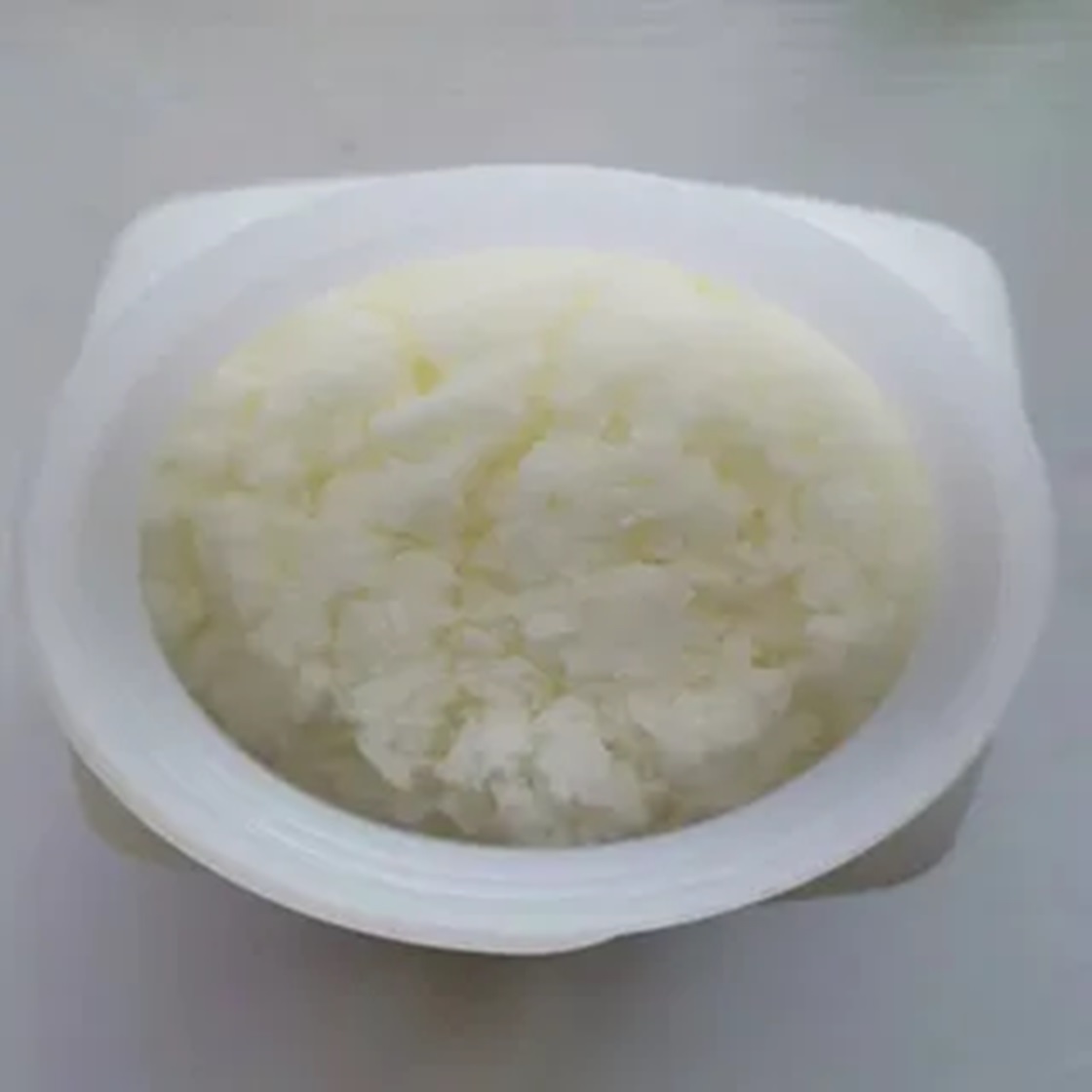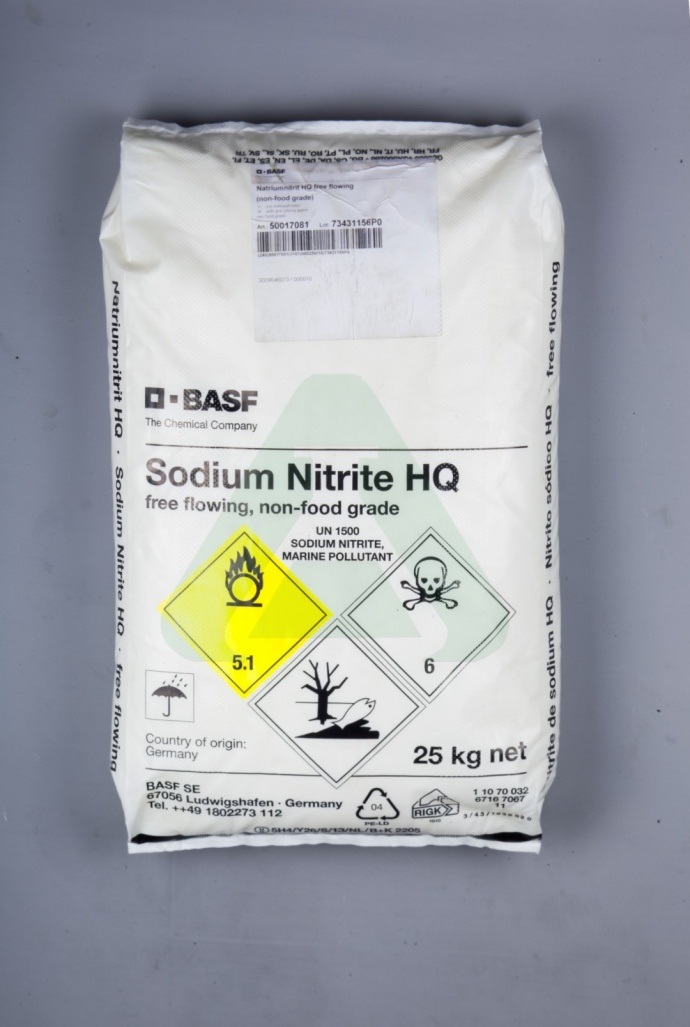We unleash your business potential by maximize the business innovation.
Send EmailE250, Sodium Nitrite, Technic Grade, Food Grade, (Liquid %99), 7632-00-0
CAS: 7632-00-0
Molecular Formula: NaNO2
Names and Identifiers
| Name | Sodium nitrite |
| Synonyms | Sodium nitrite Sodium nitrite,food grade Sodium nitrite (industrial) |
| CAS | 7632-00-0 |
| EINECS | 231-555-9 |
| InChI | InChI=1/HNO2.Na/c2-1-3;/h(H,2,3);/q;+1/p-1 |
Physico-chemical Properties
| Molecular Formula | NaNO2 |
| Molar Mass | 68.9953 |
| Melting Point | 271℃ |
| Water Solubility | 820 g/L (20℃) |
| Physical and Chemical Properties | Properties of white or microstrip light yellow orthorhombic crystal or powder. Slightly salty. Deliquescence. melting point 271 ℃ relative density 2.168 soluble in water and liquid ammonia, its aqueous solution is alkaline. Slightly soluble in anhydrous ethanol, methanol, ether. |
| Use | Used as mordant, bleaching agent, metal heat treatment agent, electroplating corrosion inhibitor, medicine used as equipment Disinfection, preservative |
Risk and Safety
| Hazard Symbols | O - Oxidizing agent T - Toxic  N - Dangerous for the environment  |
| Risk Codes | R25 - Toxic if swallowed R50 - Very Toxic to aquatic organisms R8 - Contact with combustible material may cause fire |
| Safety Description | S45 - In case of accident or if you feel unwell, seek medical advice immediately (show the label whenever possible.) S61 - Avoid release to the environment. Refer to special instructions / safety data sheets. |
| UN IDs | UN 1487/1487/1500 |
Upstream Downstream Industry
| Raw Materials | Ammonium hydroxide Sodium hydroxide Sodium carbonate Nitric acid |
| Downstream Products | Sodium sulfate nitric oxide 2,3-Dichlorobenzaldehyde 4,4'-oxybisbenzenamine 3-Methyl-1-phenyl-2-pyrazolin-5-one anthra[1,9-cd]pyrazol-6(2H)-one 2,3-Butanedione 4-fluorobenzotrifluoride Hydroxylamine hydrochloride Sodium azide 2,2,3,3-tetramethylcyclopropanecarboxylic acid |
Nature
White or microstrip yellow orthorhombic crystals or powders. Salty taste, similar to the appearance of salt. The relative density is 2. 168; The melting point is 271 ℃, and oxygen, nitrogen, nitrogen oxide and sodium oxide are decomposed at 320 ℃. Hygroscopic, soluble in water, stable aqueous solution. Slightly soluble in methanol, ethanol, ether. Oxygen can be absorbed from the air and sodium nitrate is formed. Exposed in air slowly oxidized to sodium nitrate. Contact with organic matter is prone to combustion and explosion, and toxic nitrogen oxide gas is emitted during combustion.
Preparation Method
absorption method: the ratio of nitric oxide and nitrogen dioxide in the tail gas containing nitric acid discharged during the production of dilute nitric acid is adjusted so that the weight ratio of sodium nitrite and sodium nitrate in the neutralization solution is 8 or less. Then, the tail gas containing nitrate is introduced into the bottom of the absorption tower, and the soda ash solution is sprayed from the upper part of the absorption tower to absorb nitrogen oxide in the gas to generate a neutralizing liquid. When the relative density of the neutralization solution is 1- 24~1.25 and the content of sodium carbonate is 3~5g/L, the sodium nitrite crystal is precipitated by evaporation concentration and cooling crystallization to 50~70 ℃, after centrifugal separation, the sodium nitrite product was prepared.
Standard
This product shall be calculated as dry product, and the content of NaNO2 shall not be less than 99.0%.
Trait
- This product is colorless or white dust yellowish crystals; Odorless; Has hygroscopicity; Aqueous alkaline reaction.
- This product is soluble in water, slightly soluble in ethanol.
Use
NaN02 is an oxidizing corrosion inhibitor, suitable for low hardness or ultra-low hardness water treatment. This product is toxic, it is mainly used for closed circulating cooling water system, is a dangerous corrosion inhibitor, the use of insufficient concentration, not only no corrosion inhibition, but accelerated corrosion, the use of concentration is usually 300 ~ 500mg/L. The best pH range of water quality is 8-10, so it is often used with 300 ~/L Na2 C03. Water pH<6, decomposition, no corrosion inhibition. Often with sodium molybdate compound, on the one hand to synergize, on the other hand to reduce the amount of both. Only applicable to the black metal rust, copper and other non-ferrous metals, and even corrosion.
Exam
- take about 1ml of the aqueous solution (0.3-10) of this product, add acetic acid to be acidic, and add a few drops of new ferrous sulfate test solution to show brown color.
- take an appropriate amount of the above solution, add dilute inorganic acid, and heat to generate red-brown gas.
- identification reaction of sodium salt of this product (General rule 0301).
Safety
sodium nitrite toxic, carcinogenic, lethal dose 39. Skin contact with the highest concentration of sodium nitrite for 1- 5%, higher than this concentration, will make the skin hair, appear rash. Workers exposed to or using sodium nitrite must wear prescribed protective equipment to prevent contact with the skin and entry into the body. It shall not be stored and mixed with organic matter, food, etc. to avoid explosion, combustion, and contamination of food. Transport by means of transport with barriers.
Exam
color of solution
take 2.5g of this product, add 50ml of water to dissolve, and compare the color of the solution with the yellow No. 1 Standard Colorimetric solution (General rule 0901 first method), and the solution shall not be deeper.
chloride
take 0.30g of this product and check it according to law (General rule 0801). Compared with the control solution made of 6.0ml of standard gasification sodium solution, it should not be more concentrated (0.02%).
sulfate
take l.Og of this product and check it according to law (General rule 0802). Compared with the control solution made of 0.03% of standard potassium sulfate solution, it should not be more concentrated ().
loss on drying
take this product, dry to constant weight in sulfuric acid dryer, weight loss should not exceed 1.0% (General rule 0831).
Heavy metals
take 2.0g of this product, add 6mL of dilute hydrochloric acid to dissolve, dry on a water bath and stir constantly to make the residue into coarse powder, then add 5ml of water and evaporate to dryness, after adding 23ml of water and 2ml of acetate buffer solution (pH 0821), it shall be checked according to law (General rule method 1), and the content of heavy metals shall not exceed 10 parts per million.
arsenic salt
take this product l. Add 0822 ml of sulfuric acid and ml of water to dry, heat to thick white smoke, let it cool, add 5ml of hydrochloric acid and ml of water to dissolve, and then check according to law (General Rule 1, Law 1), the provisions (0.0002%) shall be met.
Content determination
take about lg of this product, accurately weigh it, put it in a 100ml measuring flask, add an appropriate amount of water to dissolve and dilute to the scale, shake well; Take 10ml for precise measurement, with shaking, slowly add to the acidic potassium permanganate solution [precisely take potassium permanganate titration solution (0.02mol/L)50ml, put it in a plug Erlenmeyer flask, add water 100ml and mix sulfuric acid 5ml], when adding, the tip of the straw must be inserted under the surface of the liquid, and then the plug is placed for 10 minutes, and the 3G of potassium iodide is added. The plug is gently shaken to dissolve, and the solution is placed for 10 minutes, with sodium thiosulfate titration solution (0.1 mol/L) titration, to the near end point, add 2ml of starch indicator solution, continue titration to blue disappeared, and the titration result is corrected by blank test. Each 1 ml of potassium permanganate titration solution (0.02mol/L) is equivalent to 3.45mg of nano2.
Category
antidote.
7632-00-0 - Storage
sealed storage.


